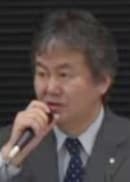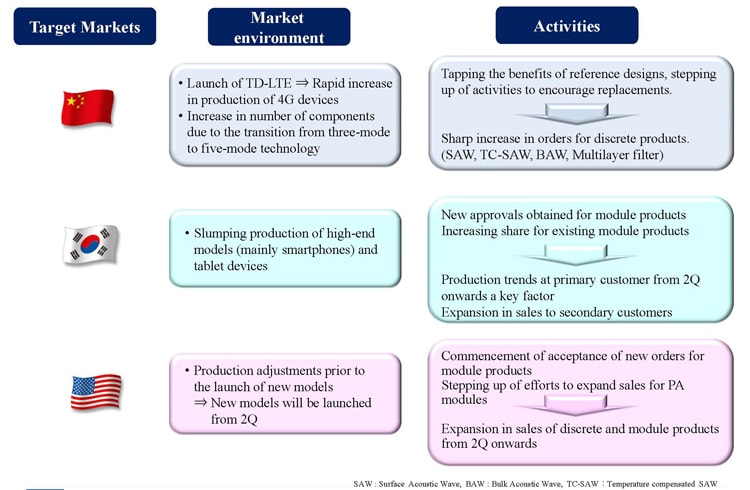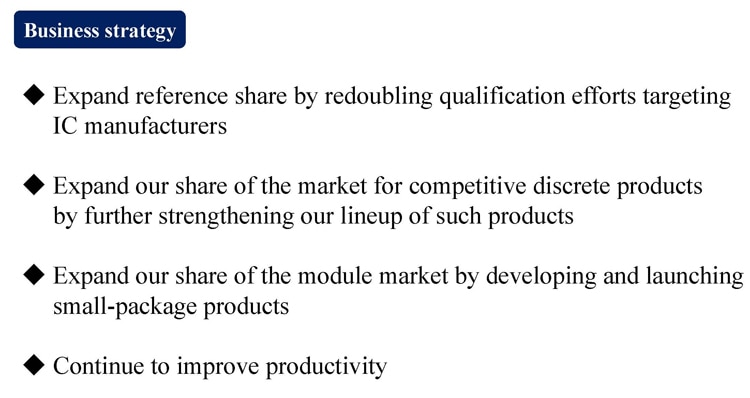[ 1st Quarter of fiscal 2015 Performance Briefing ]High Frequency Components Businesss
Mr. Hiroyuki Uemura
Executive Vice President
My presentation is on the current situation in the High Frequency Components business.
High Frequency Components
As you know, our three main target markets are China, Korea and the US. In terms of market conditions, in China the launch of TD-LTE is boosting production of 4G smartphones, with the transition from three-mode to five-mode technology raising the number of components per handset. Our focus on reference designs provided by IC makers is leading to growth in orders for discrete products, in particular for SAW, BAW and multilayer filters. Orders for these three product types have been exceeding our earlier expectations.
In Korea, we have gained client approval for new module products and secured orders. The demand for tablet-related applications is less than we forecast originally, but we have a number of module products ready to go, and we expect fresh orders linked to new models going forward. We are also making progress in developing business with our No. 2 client in Korea, who also commands a high market share. Total production at Korean smartphone and tablet device makers is down a little in general terms, but this has not affected us so badly because our share of the module market was relatively low until recently.
Finally, with our customers in North America, as you know, the production ramp-up tends to be from the second half of Q2 onwards. We have seen production adjustments prior to the launch of new models, but going forward we expect to increase sales of PA modules and related discrete products. We think orders will start increasing from the latter half of Q2.
As discussed previously, our business strategy in high-frequency components involves more qualification activities targeted at IC makers to increase our share in reference designs. We are looking at closer collaboration with chip suppliers as a way of making inroads into this market. We aim to increase market share in discrete products, where TDK is competitive, and in the module market via the development and launch of small-package products. At the same time, we are continuing to make steady gains in productivity, which should translate into better performance over time. That concludes my presentation. Thank you for your attention today.




